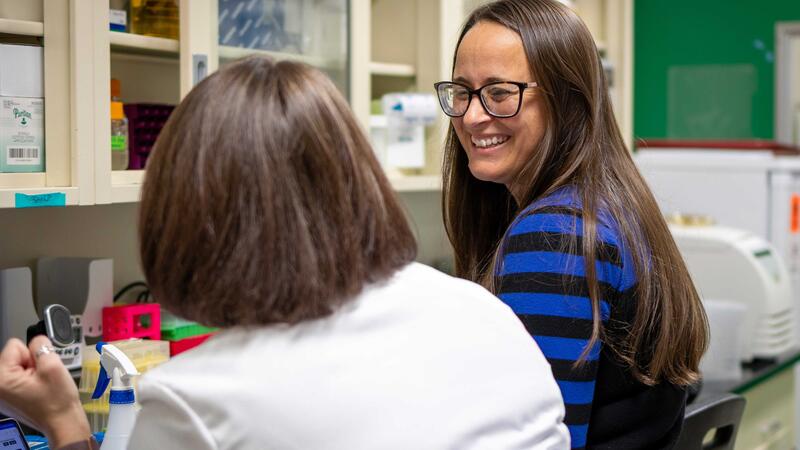News
Unraveling the mysteries of the plant microbiome
Three years after joining the Great Lakes Bioenergy Research Center, Michigan State University microbiologist Sarah Lebeis has been tapped to guide the center’s scientific research.
Researchers at the Great Lakes Bioenergy Research Center (GLBRC) recently published a study showing that quality of crop yield is less important than quantity when harvesting for cellulosic biofuels.
Earlier this month, the Great Lakes Bioenergy Research Center (GLBRC) received another major boost from the U.S. Department of Energy, receiving more than $250 million to conduct another five years of groundbreaking work on alternative fuels.
The U.S. Department of Energy (DOE) has selected the Great Lakes Bioenergy Research Center (GLBRC) for an additional five years of funding to develop sustainable alternatives to transportation fuels and products currently derived from petroleum. The past recipient of roughly $267 million in DOE funding, the GLBRC represents the largest federal grant ever awarded to UW–Madison.
Could cellulosic biofuels – or liquid energy derived from grasses and wood – become a green fuel of the future, providing an environmentally sustainable way of meeting energy needs? Writing today (Thursday, June 29) in Science, researchers at the U.S.
Ten Michigan State University professors have been named University Distinguished Professors in recognition of their achievements in the classroom, laboratory and community.
The Board of Trustees voted on and approved the recommendations on June 21. The designations were effective immediately.
Sometimes, when a science experiment doesn’t work out, unexpected opportunities open up. That’s what Yang Yang and the Benning lab have found in their latest work on sustainable biofuels.
In the world of biofuels research, the baker’s yeast Saccharomyces cerevisiae gets a lot of love, with scientists commonly tweaking the yeast’s fermentative qualities to enhance ethanol production. Researchers at the Great Lakes Bioenergy Research Center (GLBRC), however, are expanding that focus to a broad range of wild yeasts in the genus Saccharomyces.
EAST LANSING, Mich. – Michigan State University scientists have pinpointed a new source of nitrous oxide, a greenhouse gas that’s more potent than carbon dioxide. The culprit?
Tiny bits of decomposing leaves in soil.
Winter is no time to flower, which is why so many plants have evolved the ability to wait for the snow to melt before investing precious resources in blooms.
When Max Haase set out for a walk in Green Bay’s Baird Creek Nature Preserve on a May day in 2015, it was pretty normal stuff. Baird Creek was practically in his backyard, and it was a good day for a hike — sunny and unseasonably warm for so early in the UW–Madison biology major’s summer break.





